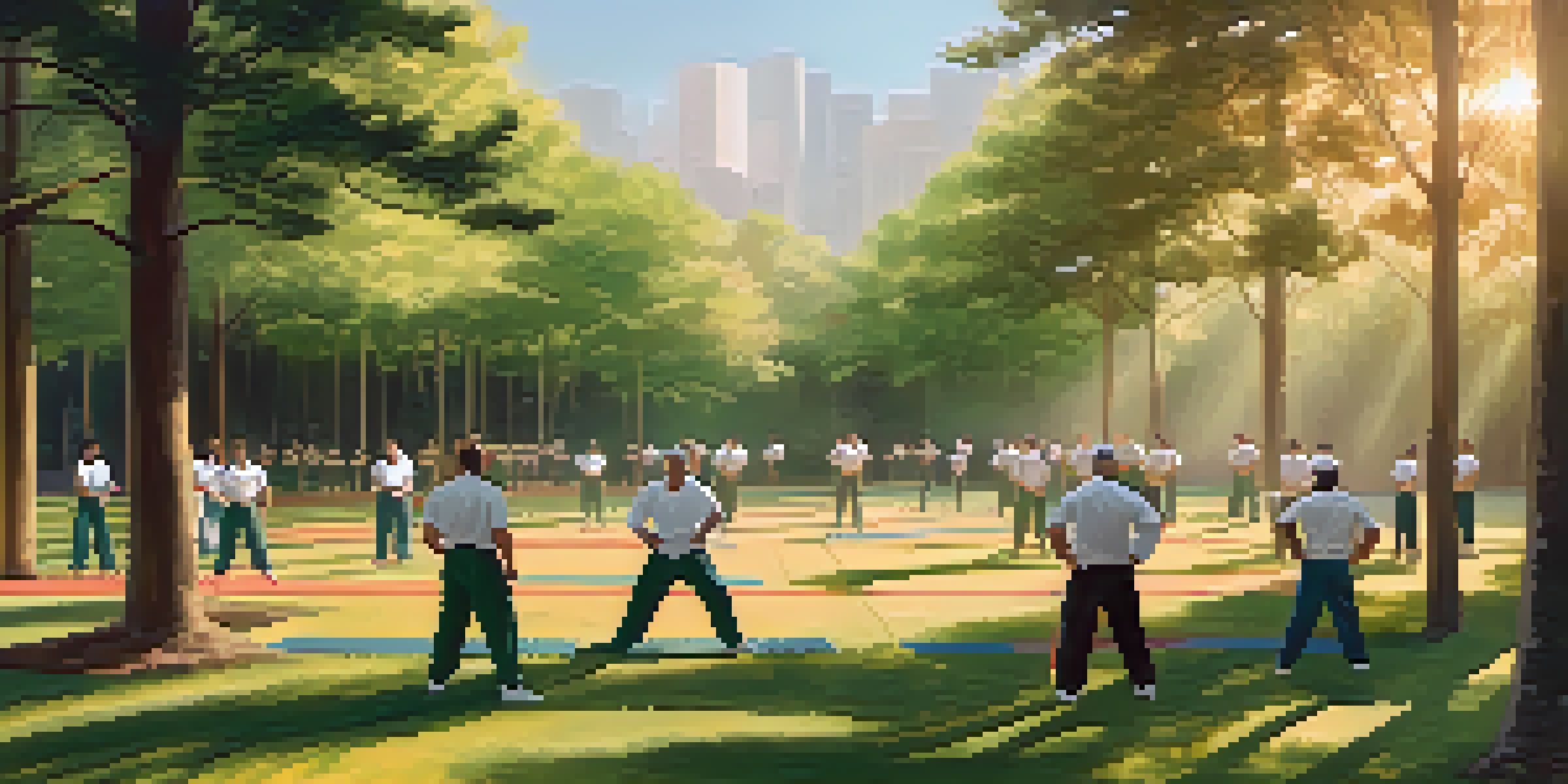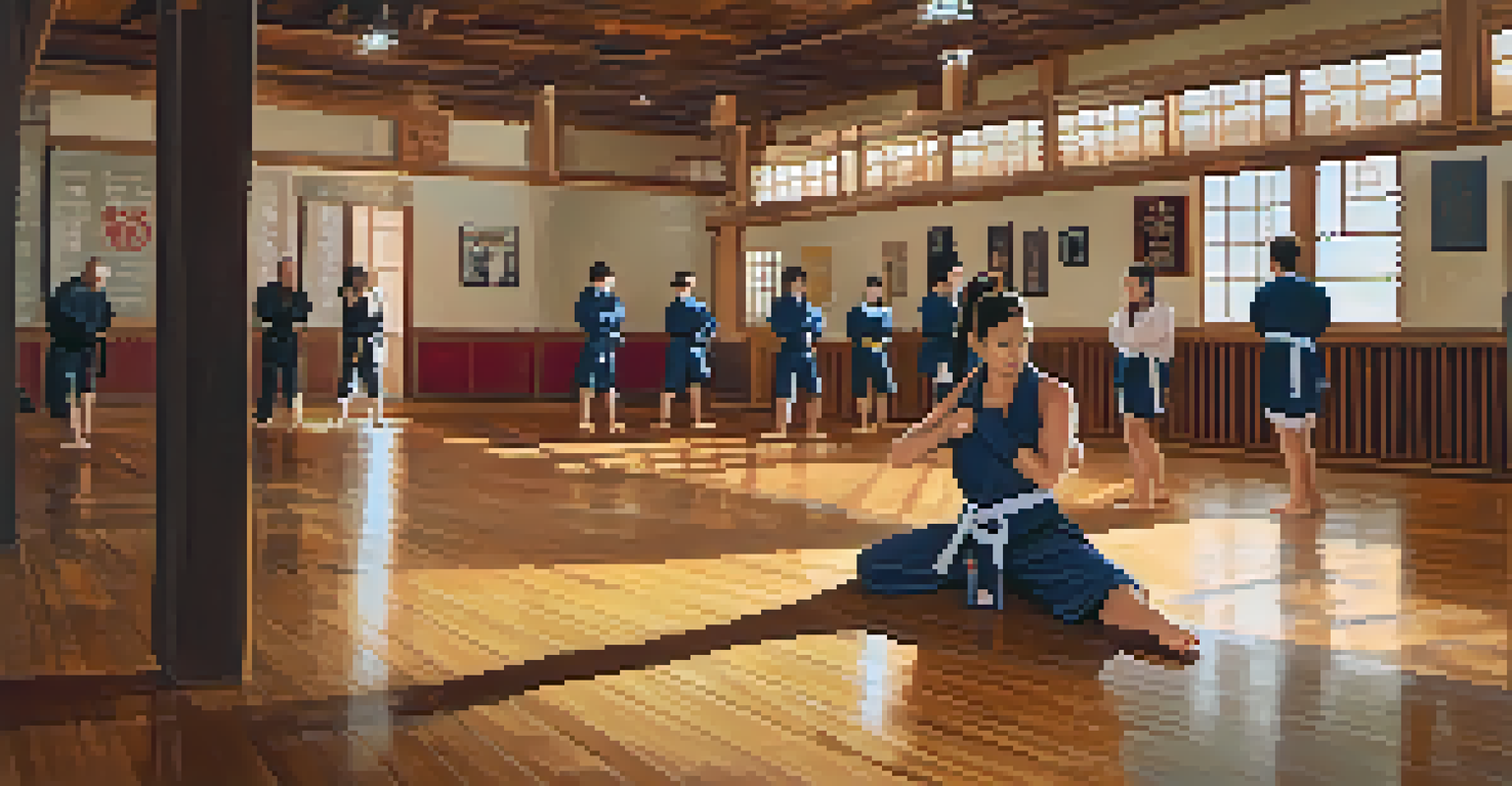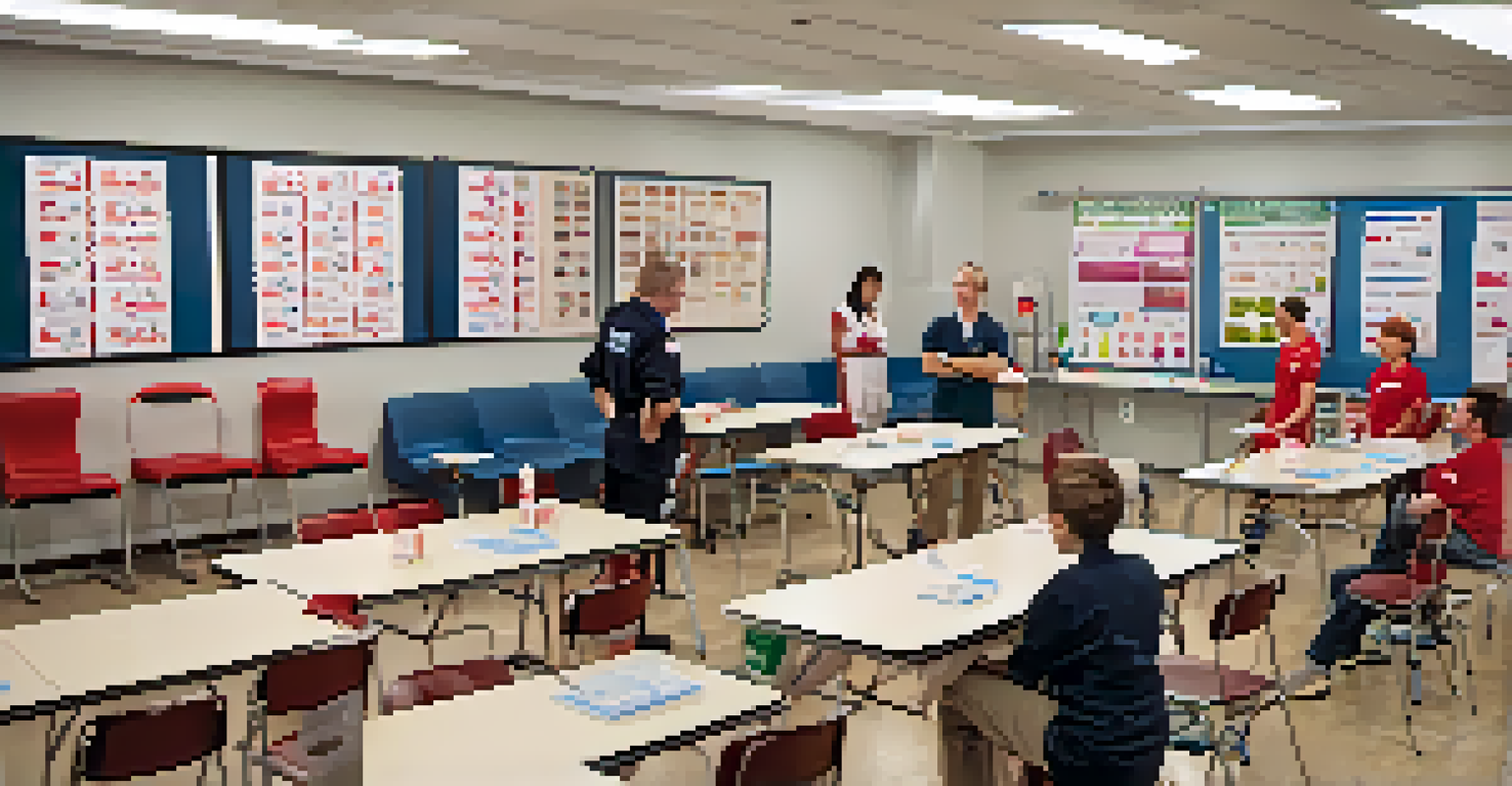Understanding Self Defense: Techniques and Basic First Aid

What is Self Defense and Why is it Important?
Self-defense refers to the strategies and techniques used to protect oneself from harm. It's not just about physical confrontation; it also includes awareness and avoidance skills. Understanding self-defense is crucial because it empowers individuals to respond appropriately in dangerous situations.
The best way to predict the future is to create it.
In today's world, where personal safety can sometimes feel compromised, knowing how to defend yourself can build confidence and peace of mind. It's about being prepared and having a plan, whether that involves de-escalating a situation or physically defending against an attacker. Every person has the right to feel safe and secure.
Moreover, self-defense training often emphasizes the importance of mental awareness. Being aware of your surroundings and potential threats can often prevent a situation from escalating. It’s not solely about fighting back but also about being proactive in ensuring your safety.
Basic Self Defense Techniques Everyone Should Know
There are several fundamental self-defense techniques that everyone can learn. Techniques like the palm heel strike, knee strikes, and basic escapes from holds can be crucial in an emergency. These moves are simple yet effective, allowing anyone to defend themselves against an attacker.

For instance, the palm heel strike is a powerful move that targets an assailant’s nose or chin, using the base of your palm. This technique can incapacitate an attacker, giving you the opportunity to escape. Practicing these techniques in a safe environment can enhance muscle memory and confidence.
Self-Defense Empowers Personal Safety
Understanding self-defense techniques and strategies builds confidence and prepares individuals to handle dangerous situations effectively.
Additionally, learning how to break free from wrist grabs or choke holds can be invaluable. These moves focus on leverage and body positioning, which means that even someone who may not be physically strong can effectively defend themselves. Remember, the goal is to create an opportunity to escape, not to engage in a prolonged struggle.
Understanding the Legal Aspects of Self Defense
While it’s important to know how to defend yourself, understanding the legal implications of using those techniques is equally crucial. Self-defense laws can vary significantly by location, so it’s vital to be informed about what is permissible in your area. Generally, the use of force must be reasonable and proportionate to the threat faced.
An ounce of prevention is worth a pound of cure.
For example, if someone is merely pushing you, responding with excessive force may not be justified legally. Understanding the concept of 'reasonable force' can help you make quick decisions in high-pressure situations. This knowledge can also help prevent legal troubles after a self-defense incident.
It's advisable to consult local laws or even take a class that covers legal aspects of self-defense. Many self-defense courses weave in discussions about your rights and responsibilities, helping you prepare not just physically but also mentally for real-world scenarios.
The Importance of Situational Awareness
Situational awareness is a critical component of self-defense that often gets overlooked. It involves being aware of your environment, recognizing potential threats, and understanding how to respond appropriately. By developing this awareness, you can often avoid dangerous situations before they escalate.
For instance, maintaining eye contact with people around you and being aware of exits in a crowded space can help you feel more secure. Simple practices like staying off your phone while walking or being alert in unfamiliar areas can significantly improve your safety. It's about cultivating a mindset that prioritizes your safety.
Legal Knowledge is Essential
Familiarity with self-defense laws helps individuals make informed decisions about using force while ensuring they remain within legal boundaries.
Additionally, situational awareness isn’t just for physical spaces. It also applies to understanding social dynamics and recognizing when a conversation might turn hostile. By being aware of both your surroundings and the people in them, you can create a safer environment for yourself.
Basic First Aid Skills for Emergencies
In addition to self-defense techniques, having basic first aid skills can be a lifesaver in emergencies. Whether you’re dealing with minor injuries or more serious situations, knowing how to administer first aid can make a significant difference. Skills like CPR, wound care, and recognizing signs of shock are crucial.
For example, in the event of a physical altercation, a person may suffer cuts or bruises. Knowing how to clean a wound and apply a bandage can prevent infections and promote healing. First aid skills complement self-defense knowledge, ensuring that you can handle multiple aspects of a situation.
Moreover, many first aid courses offer practical training that can boost your confidence. Understanding how to respond in emergencies not only helps others but also prepares you for unexpected challenges. It’s a valuable addition to your self-defense toolkit.
How to Choose the Right Self Defense Class
Choosing the right self-defense class can be overwhelming with so many options available. It’s important to consider your personal goals, whether you want to learn practical techniques, improve fitness, or boost your confidence. Researching different styles, such as Krav Maga, Brazilian Jiu-Jitsu, or traditional martial arts, can help you find the right fit.
Look for classes that emphasize realistic training scenarios and a supportive environment. Many schools offer trial classes, allowing you to experience the training before committing. Additionally, seek instructors who prioritize safety and respect, creating a positive learning atmosphere.
Practice and Situational Awareness Matter
Regular practice of self-defense skills, combined with heightened situational awareness, significantly enhances personal safety and readiness.
Lastly, consider the class size and community aspect. Smaller classes may offer more personalized instruction, while larger classes can provide a sense of camaraderie. Finding a class that aligns with your comfort level and learning style is key to enjoying the process and effectively learning self-defense.
Maintaining Your Skills and Staying Prepared
Once you’ve learned self-defense techniques and basic first aid skills, it’s essential to maintain and refine those skills over time. Regular practice helps build muscle memory and keeps your responses sharp. Consider setting aside time for refresher courses or engaging in practice drills with friends or fellow students.
Incorporating self-defense training into your fitness routine can also be beneficial. Activities like kickboxing or martial arts not only help you stay fit but also reinforce the techniques you’ve learned. Staying active contributes to your overall readiness to respond in real-life situations.

Additionally, staying informed about the latest safety tips, self-defense techniques, and first aid practices ensures you are always prepared. The more you engage with the material, the more confident and capable you’ll become in protecting yourself and others.